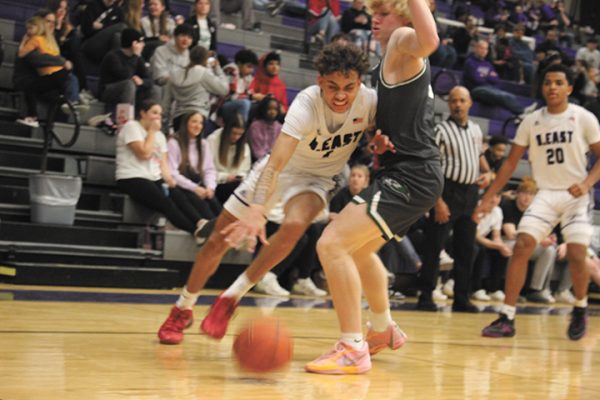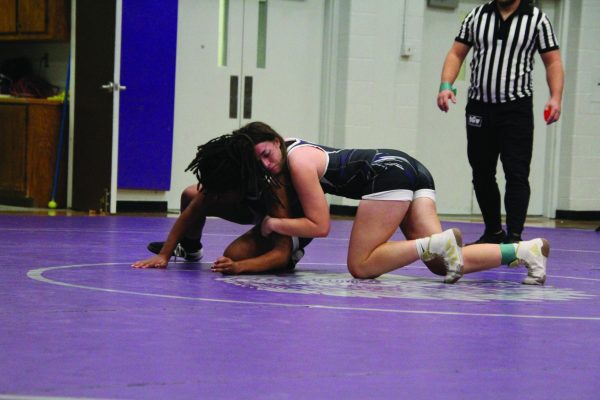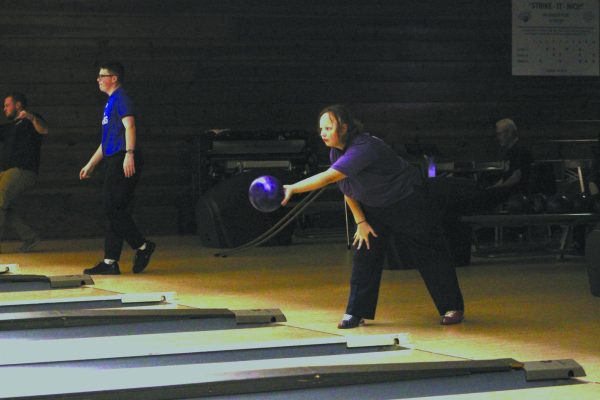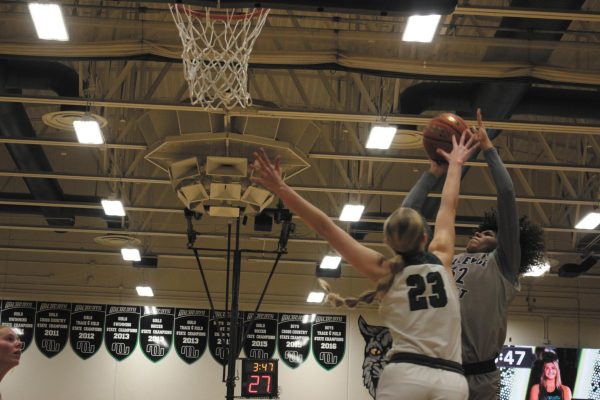Impact of COVID on Fall Sports
October 6, 2020
Senior Katie Mendick turned to her teammates and coaches and waited for everyone to gather in a huddle to team up at the end of her volleyball practice. After teaming up Mendick and her team ran around the gym, shagging balls and taking the nets and poles down. The sounds of squeaking shoes and bouncing balls filled the gym while Mendick fidgeted with her mask and pulled it away from her face for a few seconds to take deep breaths and recover from her tough practice. She wiped the fog off of her glasses caused by breathing while her mask was on. Putting her mask back on Mendick helps her team sanitize their equipment and put everything away. The smell of bleach and lemon filled the players’ noses as they helped sanitize. Mendick then ran over to her coaches to get a couple squirts of hand sanitizer and proceeded to walk with her friends to her volleyball bag to take off her gear and go home.
“You get out of breath a lot faster, but after the first few days of wearing it you get used to it,” Mendick said. “It is still a struggle though because we can’t take deep breaths without getting a mouthful of mask.”
Having to deal with masks isn’t only a requirement for volleyball players like Mendick, but the other NSAA athletics must also manage masks and other changes to the season as a result of COVID-19.
“It’s harder to practice football with the mask. It affects how we breathe and it is harder to hear each other because our voices are muffled and not everyone can understand what I am saying,” sophomore Jake Schuck said.
Even though Mendick and Schuck were both wearing masks, not all of the fall sports wear them during practices and games. The masks are primarily for the more hand-to-hand contact sport. For example, the football team wears gaiter masks and at the end of practice, despite not wearing them the entire time, Schuck said it feels like a sweaty rag around their mouths and makes it a lot harder to breathe.
Softball also wears gaiter masks. Gaiter masks are like cloth masks in a closed tube shape that athletes slip over their heads and are worn about the neck.
“It feels like we are wearing a scarf on our face because we wear the gaiter masks and it is so hot outside,” varsity softball coach Whitney Wilson said.
Gaiter masks aren’t the only masks being worn for fall sports. Mendick said for volleyball most of the players wear disposable masks because they are easier to breathe in compared to the cloth masks.
“The cloth masks make you feel super hot and it is way harder to practice with the cloth mask compared to a disposable mask,” Mendick said.
Tennis is another sport that doesn’t have to wear masks the entire practice. Senior Christian Ayala said for boys tennis they are already socially distanced on the court so they do not wear masks unless the team is getting water breaks or having meetings before or after practice. Similarly, the cross country team only wears masks at specific times.
“For cross country we wear masks for the first portion of the practice which includes warm ups and stretching and then we take them off when we actually start running,” sophomore Nate O’Brien said.
Another struggle some teams are having this season, is communicating with the masks on. Schuck said for football the players and coaches are using more hand signals now to communicate plays in practices and games.
“We have to hold everyone accountable because it is usually loud in the gym and we can’t always hear the coaches and we can’t read lips now with the mask on, so us players have to communicate more and let each other know what we are doing,” Mendick said.
Despite the obstacles masks cause for some of the players, coaches don’t necessarily have the same experience. Girls varsity golf coach Nicole Burns said that her experience hasn’t been that much different from coaching without a mask. However, Wilson noted slight changes in strategies when speaking to the players.
“The masks also muffle our voices a little, but if we step away and social distance, we pull our masks down to talk,” Wilson said.
Communication is not the only thing that has been affected due to new COVID-19 precautions. According to the 2020 NSAA Fall Season Guidelines, there are new game protocols and rules to prevent the spread of COVID-19. One of those new rules is no shaking of hands after games.
“Usually we would shake hands after games but now we can’t. After games we just wave to the other team and it’s a little weird,” Schuck said.
New rules relating to how many spectators can come watch games have also changed. Current guidance says that each athlete gets a card that allows six immediate family members to attend games; however, games are being streamed live online for people to watch at home. A rule that has recently been added to the guidelines is that seniors can now attend home games.
Aside from rules for spectators, other adjustments have to be made for cross country meets this season. Cross country is different from other sports because it traditionally requires a large number of athletes to run as a whole group, at the same time.
“We now have meets that our coaches call COVID-19 meets, and it limits only 20 male athletes and 20 female athletes from going to the meets,” O’Brien said.
Other game rules relating to the masks have also changed. According to the NSAA Guidelines, face coverings during games and meets are recommended but not required for the fall sports. Schuck said for football the players do not have to wear masks while they are playing in the game, but if they are on the sidelines masks are required. Golf is another sport not requiring masks unless they cannot maintain six feet of social distancing.
“All players have to keep their masks on until you step on the tennis court to play, and we have to social distance ourselves from our opponents so we can not shake hands after practice or get too close to the other team,” Ayala said.
Sports that involve using equipment have started sanitizing after using it during games and practices. Wilson said that for softball practices they wipe down any bats they have to share and during games each team brings their own balls. During games the defense are the only ones allowed to touch the ball and each time a ball is thrown back in the game, it has been sanitized by a coach on the sidelines.
“We take all the poles, nets, and volleyballs into the hall after practice and disinfect them, and then before and after practice everyone puts on hand sanitizer,” Mendick said.
Schedule conflicts with games due to OPS dropping out of sports this semester have also impacted the fall sport seasons. Athletic Director Chad Holtz said that after hearing the announcement on Aug. 7 that OPS was dropping out, he found other schools and new opponents to play and filled all of the varsity sports schedules.
”I was not surprised by the announcement; I felt that OPS had been leaning towards online and I knew that if that was the route then they probably would not have fall sports, but I feel bad for the athletes that didn’t get a chance to compete,” Holtz said.
Holtz said that it was not challenging to find other schools to fill in game spots because everyone who played OPS schools were also looking for games. The teams here at East have been adjusting to these new schedules and the new teams they are competing against.
“OPS dropping out has changed our schedules a lot; now we have to take longer road trips to play other teams that are farther away,” Schuck said
Other impacts to the season for fall sports have been occurring since the summer. With athletes getting sick or having to stay home and quarantine for a certain amount of days, fall sports have been adjusting and trying to manage with the numbers they have.
“It has been really stressful because we have to figure out how to have a productive practice without all of the girls there and the right positions,” Wilson said.
Fall sports have been thinking ahead, wondering if their schedules will stay the same or change due to COVID-19. O’Brien said state for cross country could potentially be cancelled because of how many people usually attend.
“It has affected how we see the season because every game could be our last before they shut it down,” Schuck said.




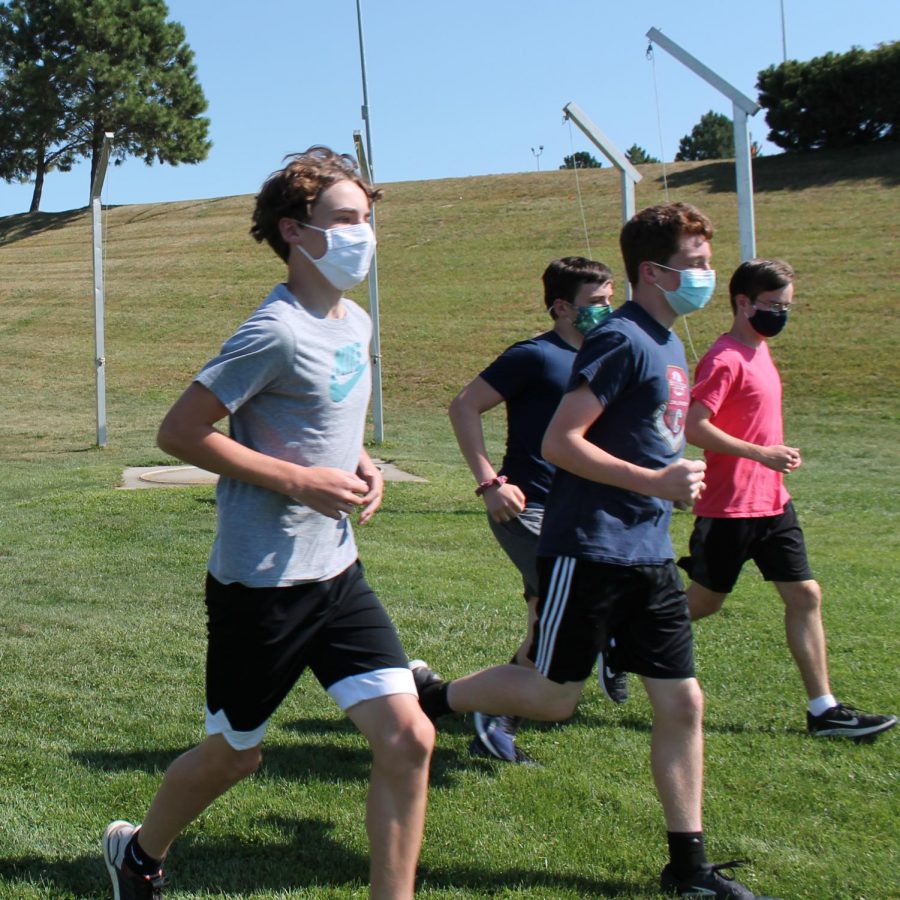
![Stay focused. With a concentrated gaze, sophomore Zoey Howard waits to get the ball from her teammate. Howard believes that female athletes can continue to be leaders and great role models for younger girls to look up to. “I am aware [that female athletes are paid less than male athletes] and it makes me mad because women work just as hard as men; we can continue to push for more equality by putting ourselves out there,” Howard said.](https://thechieftainspear.org/wp-content/uploads/2024/02/zoey-howard-for-web.jpg)
